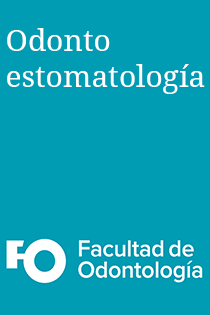Abstract
Hypoxia is a fundamental factor in the process of tumor genesis, as well as in precursor pathologies of cancer, such as Oral Lichen Planus (OLP).
Objective: To determine if it is possible to establish a correlation between the alterations that normal keratinocytes suffer in a hypoxic microenvironment in vitro and alterations that appear in the keratinocytes in the epithelium of the oral mucosa in the context of OLP pathology.
Methods: Morphological changes were studied by phase contrast microscopy, and the detection of markers associated with hypoxia of human keratinocytes (HaCaT), as an oral cell model, in a hypoxic microenvironment generated by the variant of the method "Hypoxia induced by coverslips".
Results: Using confocal microscopy, the presence of hypoxia markers GLUT-1 and Hipoxyprobe was observed in HaCaT cell cultures exposed to a hypoxic microenvironment. In addition, the presence of the GLUT-1 marker was observed by immunohistochemistry in human epithelial tissue derived from biopsies of OLP pathology.
Conclusions: A correlation was established between the alterations detected in human keratinocytes induced in a hypoxic microenvironment in vitro and the alterations detected in vivo in epithelial tissue of the oral mucosa.
References
2.Eltzschig H. K., & Carmeliet P. Hypoxia and Inflammation. New England Journal of Medicine, 2011 364(7), 656–665. https://doi.org/10.1056/NEJMra0910283.
3.Marín-Hernández Á. El factor inducido por la hipoxia-1 (HIF-1) y la glucólisis en las células tumorales. Revista de Educación Bioquímica 2009, 28(2), 42–51.
4.Wong, W. J., Richardson, T., Seykora, J. T., Cotsarelis, G., & Simon, M. C. Hypoxia-inducible factors regulate filaggrin expression and epidermal barrier function. Journal of Investigative Dermatology 2015; 135(2), 454–461. https://doi.org/10.1038/jid.2014.283.
5.Kujan, O., Farah, C. S., & Johnson, N. W. Oral and oropharyngeal cancer in the Middle East and North Africa. Translational Research in Oral Oncology 2017; 2, 2057178X1769848. https://doi.org/10.1177/2057178x17698480
6.Becelli, R., Renzi, G., Morello, R., & Altieri, F. Intracellular and extracellular tumor pH measurement in a series of patients with oral cancer. Journal of Craniofacial Surgery 2007; 18(5), 1051–1054. https://doi.org/10.1097/scs.0b013e3180de63eb.
7.Jones, K. B., & Klein, O. D. Oral epithelial stem cells in tissue maintenance and disease: The first steps in a long journey. International Journal of Oral Science 2013; 5(3), 121–129. https://doi.org/10.1038/ijos.2013.46.
8.Bermejo Fenoll A, López-Jornet P. Liquen plano oral. Naturaleza, aspectos clínicos y tratamiento RCOE 2004, 9(4)
9.Cheng, Y. S. L., Gould, A., Kurago, Z., Fantasia, J., & Muller, S. Diagnosis of oral lichen planus: a position paper of the American Academy of Oral and Maxillofacial Pathology. Oral Surgery, Oral Medicine, Oral Pathology and Oral Radiology 2016; 122 (3), 332–354. https://doi.org/10.1016/j.oooo.2016.05.004.
10.Seo, M. D., Kang, T. J., Lee, C. H., Lee, A. Y., & Noh, M. HaCaT keratinocytes and primary epidermal keratinocytes have different 45 transcriptional profiles of cornified envelope-associated genes to T helper cell cytokines. Biomolecules and Therapeutics 2012; 20(2), 171–176. https://doi.org/10.4062/biomolther.2012.20.2.171.
11.Ge, Y., Xu, Y., Sun, W., Man, Z., Zhu, L., Xia, X., Zhao, L., Zhao, Y., & Wang, X. The molecular mechanisms of the effect of Dexamethasone and Cyclosporin A on TLR4 /NF-κB signaling pathway activation in oral 43 lichen planus. Gene 2012; 508(2), 157–164. https://doi.org/10.1016/j.gene.2012.07.045.
12.Pitts, K. R., & Toombs, C. F. Coverslip hypoxia: A novel method for studying cardiac myocyte hypoxia and ischemia in vitro. American Journal of Physiology - Heart and Circulatory Physiology 2004; 287(4 56-4), H1801–H1812. https://doi.org/10.1152/ajpheart.00232.2004
13.Arocena, M., Landeira, M., Di Paolo, A., Silva, A., Sotelo-Silveira, J., Fernández, A., & Alonso, J. Using a variant of coverslip hypoxia to visualize tumor cell alterations at increasing distances from an oxygen source. Journal of Cellular Physiology 2019; 234(10), 16671–16678. https://doi.org/10.1002/jcp.28507.
14.Greenspan, P., & Fowler, S. D. Spectrofluorometric studies of the lipid probe, nile red. Journal of Lipid Research, 1985; 26(7), 781–789.
15.Michel, S., Schmidt, R., Shroot, B., & Reichert, U. Morphological and biochemical characterization of the cornified envelopes from human epidermal keratinocytes of different origin. J Investigative Dermatol 1988; 91(1), 16–21. https://doi.org/10.1111/1523- 1747.ep12463281.
16.Cousins, F. L., Murray, A. A., Scanlon, J. P., & Saunders, P. T. K. HypoxyprobeTM reveals dynamic spatial and temporal changes in hypoxia in a mouse model of endometrial breakdown and repair. BMC Research Notes 2016; 9(1), 1–5. https://doi.org/10.1186/s13104-016-1842-8.
17.Zieseniss A. Hypoxia and the modulation of the actin cytoskeleton - emerging interrelations. Hypoxia (Auckl). 2014 Mar 25;2:11-21. doi: 10.2147/HP.S53575.
18.Nguyen, V. T., Ndoye, A., Hall, L. L., Zia, S., Arredondo, J., Chernyavsky, A. I., Kist, D. A., Zelickson, B. D., Lawry, M. A., & Grando, S. A. Programmed cell death of keratinocytes culminates in apoptotic secretion of a humectant upon secretagogue action of acetylcholine. Journal of Cell Science 2001; 114(6), 1189–1204.
19.Zhang, X., Saarinen, A. M., Hitosugi, T., Wang, Z., Wang, L., Ho, T. H., & Liu, J. Inhibition of intracellular lipolysis promotes human cancer cell adaptation to hypoxia. ELife 2017; 6, 1–24. https://doi.org/10.7554/eLife.31132.
20.Rademakers, S. E., Lok, J., van der Kogel, A. J., Bussink, J., & Kaanders, J. H. A. M. Metabolic markers in relation to hypoxia; staining patterns and colocalization of pimonidazole, HIF-1α, CAIX, LDH-5, GLUT-1, MCT1 and MCT4. BMC Cancer 2011; 11. https://doi.org/10.1186/1471-2407-11-167.
21.de Carvalho Fraga CA, Alves LR, Marques-Silva L, de Sousa AA, Jorge AS, de Jesus SF, Vilela DN, Pinheiro UB, Jones KM, de Paula AM, Guimarães AL. High HIF-1α expression genotypes in oral lichen planus. Clin Oral Investig. 2013; 17(9):2011-5. doi: 10.1007/s00784-013-0920-8. Epub Jan 19.


